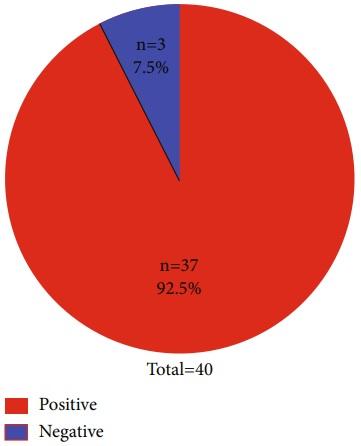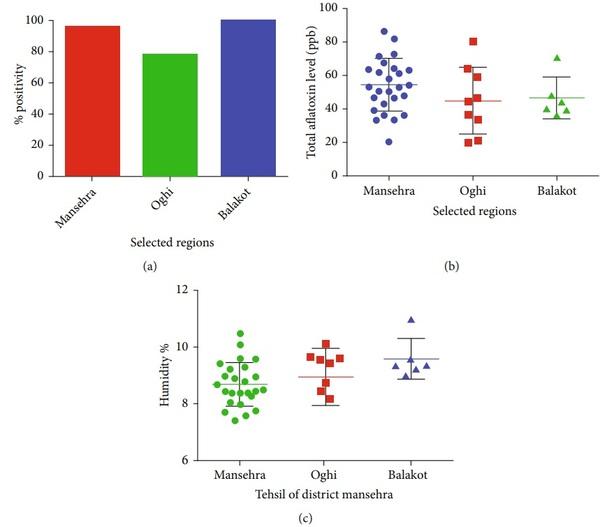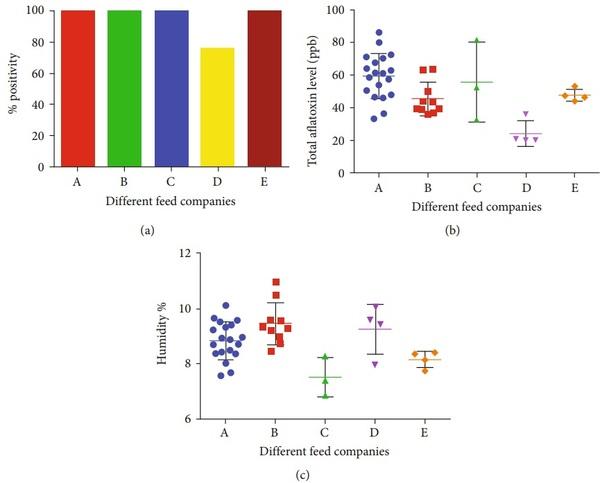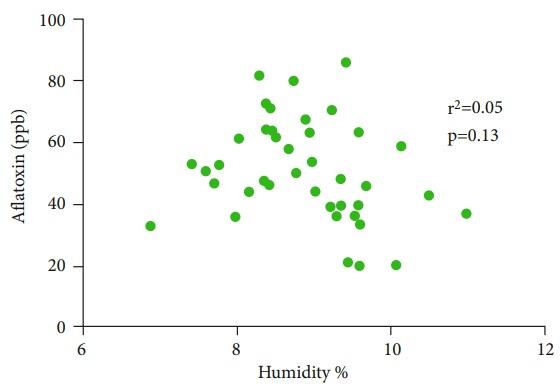Quantitative Estimation of Aflatoxin Level in Poultry Feed in Selected Poultry Farms
Author details:
1 Department of Microbiology, Hazara University Mansehra, 21300, Pakistan; 2 Functional Genomics and Bioinformatics, National Agricultural Research Centre, Islamabad 45500, Pakistan; 3 National Institute for Genomics Advanced Biotechnology, National Agricultural Research Centre, Park Road, Islamabad-45500, Pakistan; 4 Livestock Research and Development Station, Peshawar, Pakistan; 5 Applied Microbiology, Biotechnology and Nanotechnology Laboratory, Department of Microbiology, Edo State University Uzairue, Edo State, Nigeria; 6 College of Plant Science and Technology, Huazhong Agricultural University, Wuhan 430070, China; 7 Cell and Molecular Biology, University of Arkansas, Fayetteville 72701, USA; 8 Department of Zoology, College of Science, King Saud University, P.O. Box 2455, Riyadh 11451, Saudi Arabia.






[1] E. Binder, L. Tan, L. Chin, J. Handl, and J. Richard, “Worldwide occurrence of mycotoxins in commodities, feeds and feed ingredients,” Animal Feed Science and Technology, vol. 137, no. 3-4, pp. 265–282, 2007.
[2] G. Edds and R. Bortell, Biological effects of aflatoxins: poultry, Southern cooperative series bulletin, 1983.
[3] Y. A. Attia, H. F. Allakany, A. E. Abd Al-Hamid, A. A. AlSaffar, R. A. Hassan, and N. A. Mohamed, “Capability of different non-nutritive feed additives on improving productive and physiological traits of broiler chicks fed diets with or without aflatoxin during the first 3 weeks of life,” Journal of Animal Physiology and Animal Nutrition (Berl), vol. 97, no. 4, pp. 754–772, 2013.
[4] H. J. Lee and D. Ryu, “Worldwide occurrence of mycotoxins in cereals and cereal-derived food products: public health perspectives of their co-occurrence,” Journal of Agricultural and Food Chemistry, vol. 65, no. 33, pp. 7034–7051, 2017.
[5] Y. Attia, A. Abd Al-Hamid, H. Allakany, M. Al-Harthi, and N. Mohamed, “Necessity of continuing of supplementation of non-nutritive feed additive during days 21–42 of age following 3 weeks of feeding aflatoxin to broiler chickens,” Journal of Applied Animal Research, vol. 44, pp. 87–98, 2016.
[6] R. Bhat, R. V. Rai, and A. A. Karim, “Mycotoxins in food and feed: present status and future concerns,” Comprehensive Reviews in Food Science and Food Safety, vol. 9, no. 1, pp. 57–81, 2010.
[7] C. Yang, G. Song, and W. Lim, “Effects of mycotoxincontaminated feed on farm animals,” Journal of Hazardous Materials, vol. 389, article 122087, 2020.
[8] B. Chen, D. Li, M. Li et al., “Induction of mitochondriamediated apoptosis and PI3K/Akt/mTOR-mediated autophagy by aflatoxin B2 in hepatocytes of broilers,” Oncotarget, vol. 7, no. 51, pp. 84989–84998, 2016.
[9] F. Gan, Y. Yang, Y. Chen, C. Che, C. Pan, and K. Huang, “Bush sophora root polysaccharide could help prevent aflatoxin B1- induced hepatotoxicity in the primary chicken hepatocytes,” Toxicon, vol. 150, pp. 180–187, 2018.
[10] A. Nazhand, A. Durazzo, M. Lucarini, E. B. Souto, and A. Santini, “Characteristics, occurrence, detection and detoxification of aflatoxins in foods and feeds,” Foods, vol. 9, no. 5, p. 644, 2020.
[11] C. Chen, N. J. Mitchell, J. Gratz et al., “Exposure to aflatoxin and fumonisin in children at risk for growth impairment in rural Tanzania,” Environment International, vol. 115, pp. 29– 37, 2018.
[12] J. F. Leslie, R. Bandyopadhyay, and A. Visconti, Mycotoxins: Detection Methods, Management, Public Health and Agricultural Trade, CABI, 2008.
[13] L. Hou, X. Zhou, F. Gan et al., “Combination of selenomethionine and N-acetylcysteine alleviates the joint toxicities of aflatoxin B1 and ochratoxin A by ERK MAPK signal pathway in porcine alveolar macrophages,” Journal of Agricultural and Food Chemistry, vol. 66, no. 23, pp. 5913–5923, 2018.
[14] A. Alshannaq and J. H. Yu, “Occurrence, toxicity, and analysis of major mycotoxins in food,” International Journal of Environmental Research and Public Health, vol. 14, no. 6, p. 632, 2017.
[15] U. P. Sarma, P. J. Bhetaria, P. Devi, and A. Varma, “Aflatoxins: implications on health,” Indian Journal of Clinical Biochemistry, vol. 32, no. 2, pp. 124–133, 2017.
[16] G. Obrian, D. Georgianna, J. Wilkinson et al., “The effect of elevated temperature on gene transcription and aflatoxin biosynthesis,” Mycologia, vol. 99, no. 2, pp. 232–239, 2007.
[17] S. Srianujata, “(Year) Published. Regulatory update and control measures for prevention and reduction of mycotoxins contamination in foods and feeds,” Proceedings of FFTC-KU 2011 conference: International Seminar on Risk Assessment and Risk Management of Mycotoxins for Food Safety in Asia, Kasetsart University, Bangkok, Thailand, 2011.
[18] M. Sadiq, “Pakistan poultry sector still on an upward swing,” World Poult, vol. 20, pp. 10-11, 2004.
[19] M. Anjum, A. Sahota, M. Akram, and I. Ali, “Prevalence of mycotoxins in poultry feeds and feed ingredients in Punjab (Pakistan), ” The Journal of Animal and Plant Sciences, vol. 2, pp. 117 –120, 2011.
[20] N. Q. Hanif, M. Naseem, S. Khatoon, and N. Malik, “Prevalance of mycotoxins in poultry finished feed,” Journal of Animal and Veterinary Advances, 2005.
[21] N. Rashid, M. Bajwa, M. Rafeeq et al., “Prevalence of a flatoxin B1 in finished commercial broiler feed from west central Pakistan,” J Anim Plant Sci, vol. 22, pp. 6–10, 2012.
[22] N. Ali, N. Hashim, B. Saad, K. Safan, M. Nakajima, and T. Yoshizawa, “Evaluation of a method to determine the natural occurrence of aflatoxins in commercial traditional herbal medicines from Malaysia and Indonesia, ” Food and Chemical Toxicology, vol. 43, no. 12, pp. 1763 –1772, 2005.
[23] Z. Abidin, A. Khatoon, N. Arooj et al., “Estimation of ochratoxin A in poultry feed and its ingredients with special reference to temperature conditions,” British Poultry Science, vol. 58, no. 3, pp. 251 –255, 2017.
[24] M. Ventura, A. Gómez, I. Anaya et al., “Determination of a flatoxins B1, G1, B2 and G2 in medicinal herbs by liquid chromatography–tandem mass spectrometry,” Journal of Chromatography A, vol. 1048, no. 1, pp. 25 –29, 2004.
[25] C. N. Rossi, C. R. Takabayashi, M. A. Ono et al., “Immunoassay based on monoclonal antibody for aflatoxin detection in poultry feed, ” Food Chemistry, vol. 132, no. 4, pp. 2211 – 2216, 2012.
[26] A. Zinedine, C. Juan, J. Soriano, J. Molto, L. Idrissi, and J. Manes, “Limited survey for the occurrence of a flatoxins in cereals and poultry feeds from Rabat, Morocco, ” International Journal of Food Microbiology, vol. 115, no. 1, pp. 124 –127, 2007.
[27] M. Dawlatana, R. Coker, M. Nagler, C. Wild, M. Hassan, and G. Blunden, “The occurrence of mycotoxins in key commodities in Bangladesh: surveillance results from 1993 to 1995,” Journal of Natural Toxins, vol. 11, no. 4, pp. 379 –386, 2002.
[28] R. Ata-Ur-Rehman, A. Shakoori, and S. Rizvi, “ A flatoxin contamination of commercial poultry feeds in Punjab, Pakistan,” Pakistan Journal of Zoology, vol. 22, pp. 387 –398, 1990.
[29] A. C. Cavalheiro, “ A flatoxin and a flatoxicosis —a review, ” World's Poultry Science Journal, vol. 37, no. 1, pp. 34 –38, 1981.
[30] S. Xiulan, Z. Xiaolian, T. Jian, G. Xiaohong, Z. Jun, and F. Chu, “Development of an immunochromatographic assay for detection of aflatoxin B1 in foods,” Food Control, vol. 17, no. 4, pp. 256 –262, 2006.
[31] M. Del Pilar Monge, C. E. Magnoli, and S. M. Chiacchiera, “Survey of Aspergillus and Fusarium species and their mycotoxins in raw materials and poultry feeds from Córdoba, Argentina, ” Mycotoxin Research, vol. 28, no. 2, pp. 111 –122, 2012.
[32] E. Ewaidah, “Survey of poultry feeds for a flatoxins from Riyadh region, ” Arab Gulf Journal of Scientific Research , vol. 6, pp. 1 –7, 1988.







